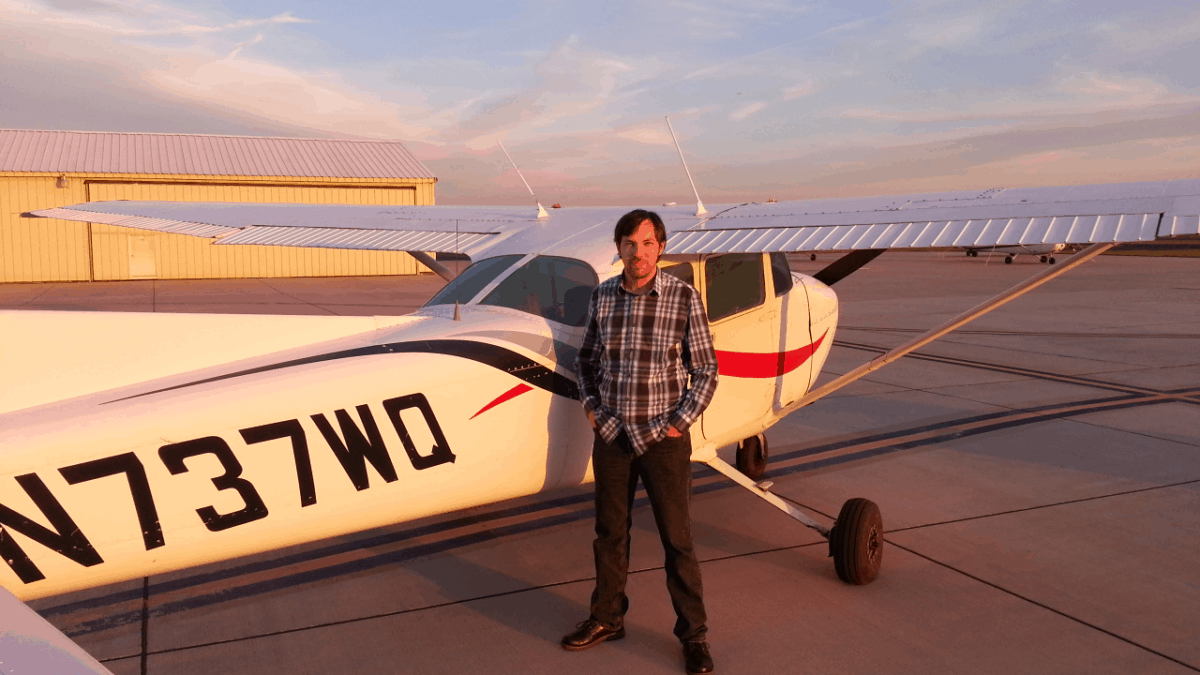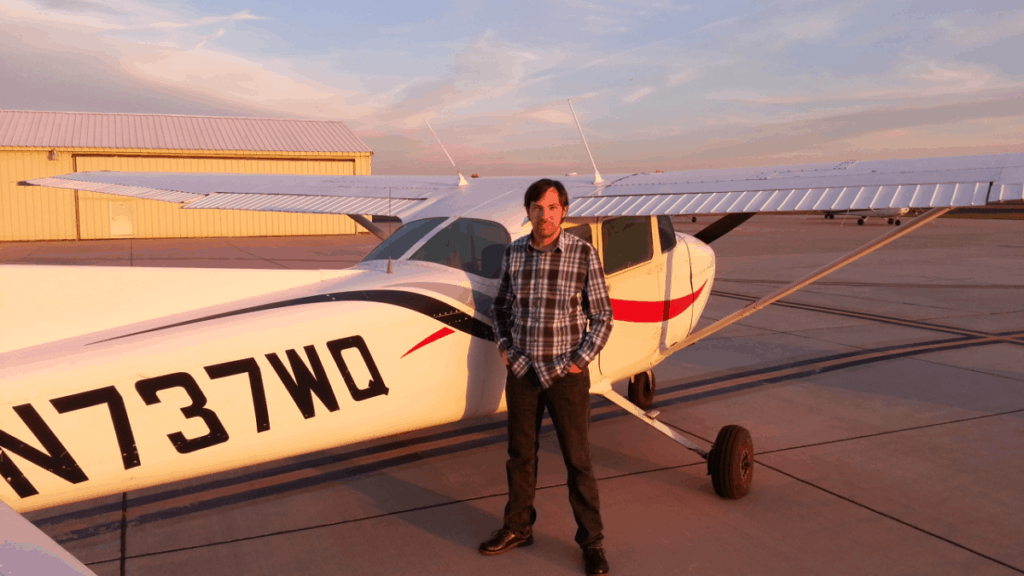
The joys of gaining your Private Pilot Certificate are a well-earned achievement, but now you have your license what exactly can you do with it? I used to take friends and family out for flights every weekend for a small fee, but how much can you legally charge?
The holder of a Private Pilot Certificate is able to fly any aircraft they are certified on and take as many passengers as it can fit, but must pay an equal share for the cost of the flight. The Private Pilot Certificate is great for taking family and friends on fun trips.
Flying, just like driving, requires experience to be gathered to become safer. The Private Pilot Certificate is the first step to flying more than one passenger while gathering your experience but you have to do it in a safe manner.
As with everything in aviation, there are limits and restrictions on what you can do. This article goes through some of the most common questions regarding what a pilot can do with their Private Pilot Certificate.
What are the Privileges & Limitations of a Private Pilot Certificate?
Everything that the owner of a Private Pilot Certificate is allowed to do and to what extent they can do it is governed by 14 CFR Part 61 Subpart E – Private Pilots. In particular §61.113 Private pilot privileges and limitations: Pilot in command.
Let’s turn these regulations into plain English!
What You Can & Cannot Do With a PPL Certificate:
- No Financial Gain:
A Private Pilot cannot make a financial profit from any flight. However:- A flight can be used for business purposes if its deemed incidental to that business.
- They must not carry any passenger or cargo for which the pilot receives money.
- Pay an Equal Share:
A Private Pilot must pay an equal share of the rental costs, fuel, oil, and any airport fees with the other passengers on board.
- Fly For Charity:
A Private Pilot may fly at Charitable Events and for Non-Profit Organizations provided no payment is received by the pilot. Money can be charged for the flights but that money must go to the charity or non-profit organization.
- Search & Locate:
A Private Pilot may fly Search & Locate Operations when authorized by a local, State, or Federal agency or a SAR organization and only be reimbursed any rental costs, fuel, oil, or airport fees.
- Flying Salesman:
A Private Pilot may act as an aircraft salesman for that aircraft while in flight with a prospective buyer, provided said pilot has logged over 200 hours of flight time.
- Undertake Flight Tests:
A Private Pilot may conduct a production flight test for a Light-Sport Aircraft that is intended for certification providing that:- The Aircraft is a Powered Parachute, or
- The Aircraft is of Weight-Shift-Control
- The pilot has a minimum of 100 hours in that aircraft category & class
- The pilot is familiar with product flight tests for certification
- Glider Towing:
A Private Pilot may pilot an aircraft to tow Gliders or Unpowered Ultra-Light Aircraft providing they meet the requirements of:
§61.69 Glider and unpowered ultralight vehicle towing: Experience and training requirements.
So the bottom line is the FAA does not allow the holder of a Private Pilot Certificate to make any money from a flight they are piloting.
This is more to prevent unscrupulous persons flying for profit and possibly creating a safety hazard to passengers or people on the ground due to their lack of training and/or experience.
For Example:
Uncle Bob shows up to a community event in his Robinson R44 helicopter, the ink still wet on his license, and begins charging the public $50 a ride. They would be expecting a professional pilot with all the necessary training and insurance. – This is ILLEGAL in the eyes of the FAA.
But:
Uncle Bob shows up to a family BBQ in his Robinson R44 helicopter, the ink still wet on his license, and gives rides for free. Family members would be aware of his experience (or lack of it) and can then make up their own mind whether to take a ride or not – This is LEGAL in the eyes of the FAA.
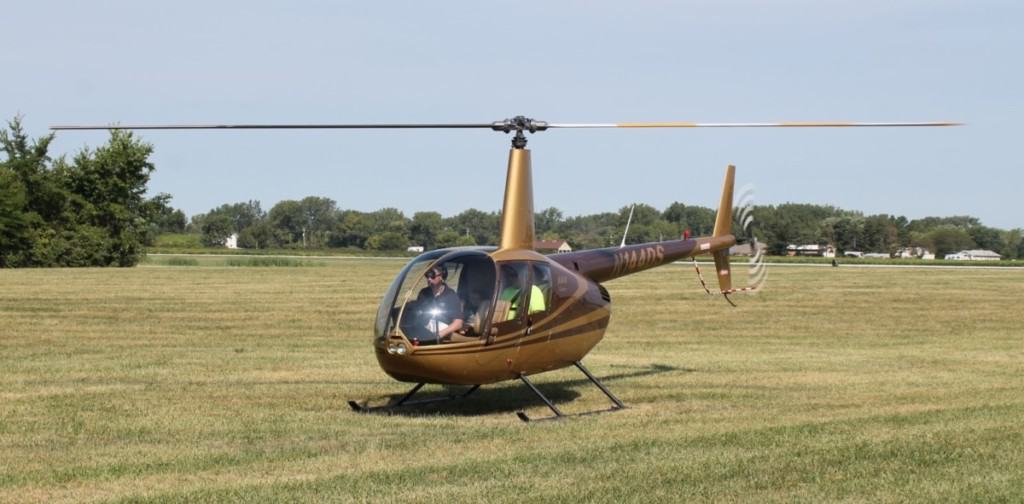
But what if Uncle Bob had won the Lotto and were to land in a large 12 seat helicopter…?

Join My Newsletter & Get Great Tips, Information and Experiences To Help You Become a Superb Pilot!
How Many People Can a Private Pilot Fly?
There are two parts to this question:
- Medical Certificate
- Recency Requirements
Medical Certificate
With Valid Medical Certificate:
A Private Pilot is only limited by the number of passenger seats available for the aircraft they are currently certified on.
With No Medical Certificate:
According to §61.113(i)
A Private Pilot is able to fly without a valid Medical Certificate providing:
- They have a Valid US Drivers License, &
- Comply with the requirements of §61.23(c)(3)
Then that pilot can fly:
- An aircraft no heavier than 6000 lbs at take off, &
- That aircraft can only carry a maximum of 6 occupants, &
- No more than 5 passengers can be onboard
This is far better than the passenger-carrying restrictions of:
Sport Pilot = 2 Seats Max in aircraft – Only 1 Passenger Allowed
Recreational Pilot = No Max number of seats in aircraft – Only 1 Passenger Allowed
Recency Requirements
According to §61.57 Recent flight experience: Pilot in command:
To legally carry passengers a Private Pilot Certificate Holder has to ensure they have been the sole manipulator of the controls of an aircraft of the same Category, Class & Type, and completed 3 take-offs and landings within the 90 days preceding any passenger flight.
- In an airplane, this is 3 touch-n-go’s with a full circuit in between
- In a Tail-dragger, the same, but each landing must come to a complete stop
- In a helicopter, there must be a full circuit between each take-off and landing
Learn More…
Try These Articles:
* Helicopter or Airplane: Which is Easier To Fly?
* Pilot Medical Exam – What You Need To Pass Each Class
Can a Private Pilot Carry Passengers at Night?
Yes, a Private Pilot Certificate holder is able to as many passengers as the aircraft has seats for at night but there are a few additional factors that the pilot needs to ensure are met before the flight can commence.
The FAA Class Night As:
‘The Period Commencing 1 Hour After Sunset & Ending 1 Hour Before Sunrise’
Time&Date.com has a great little Sunrise & Sunset Calculator for your location – Click Here To Try
Recency
Just like the day recency requirements, the pilot has night recency requirements to fulfill:
According to §61.57(B)
To legally carry passengers at night a Private Pilot Certificate Holder has to ensure they have been the sole manipulator of the controls of an aircraft of the same Category, Class & Type and completed 3 take-off’s and landings at night within the 90 days preceding any passenger flight.
- In an airplane, this is 3 take-offs & landings with a full stop and a full circuit in between
- In a helicopter, there must be a full circuit between each take-off and landing
Required Aircraft Equipment
In addition to the required instrumentation & equipment to be on-board for flights during the day the FAA stipulates the following additional equipment to be onboard for Night VFR flights:
- Position Lights
- At least one Anti-Collision Light
- An adequate source of electrical energy
- Spare fuses accessible to the pilot
Weather Limits
Because flying at night has its own additional challenges for the pilot it is also much harder to see or detect inclement weather and the chances of losing visual reference to the surface are dramatically increased.
To help improve flight safety the FAA raises the minimums for flying in Class G airspace. All other airspace retains the same minimums.
According to §91.155(A):
Night Weather Minimums:
Helicopters – 1200ft AGL & Below:
1 Statute Mile Visibility, &
Clear of Clouds
All Other Aircraft – 1200ft AGL & Below:
3 Statue Miles Visibility, &
500ft Below Clouds, 1000ft Above Clouds & 2000ft Horizontally from Clouds
All Aircraft – Above 1200ft AGL & Below 10,000ft MSL:
3 Statue Miles Visibility, &
500ft Below Clouds, 1000ft Above Clouds & 2000ft Horizontally from Clouds
Night Training Circuits
According to §91.155(B):
If operating within Class G Airspace, in an airport traffic pattern, and remaining within 1/2mile of the runway the above weather limits can be reduced to:
Helicopters:
1/2 Statute Mile Visibility, &
Clear of Clouds
Airplane, Powered Parachute, or Weight-Shift-Control aircraft:
Above 1 Statute Mile Visibility, &
Clear of Clouds
Can a Private Pilot Cross an International Border?
Yes, A Private Pilot flying an aircraft with passengers on board is allowed, and to be honest, it is encouraged! Taking your family or friends on a trip across the border opens up even more incredible scenery and experiences that they will never forget.
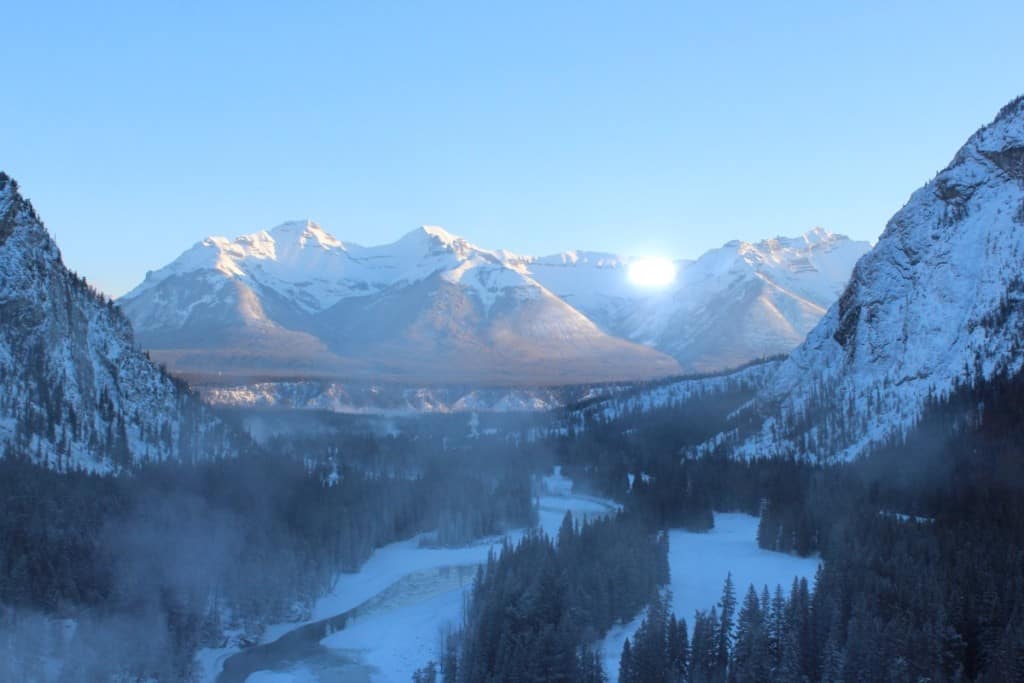
The process to cross the border is fairly simple and after it has been completed once or twice, then flying across a US border will be no more work than planning a regular flight within the US.
There are a few extra things the pilot has to ensure and do before the flight:
Passports
A passport for each occupant in the aircraft that is valid for the duration of the trip has to be carried for each flight crossing the border. Both ways!
Visas
Any occupant onboard the aircraft that is not a US citizen may require a visa for the country you plan on entering. This requires research before the flight to ensure compliance. All US citizens on board do not need a visa to visit neighboring countries.
Aircraft Insurance
Before planning to visit another country it is advisable to check your aircraft insurance covers you once over the border. Every policy is different so a quick phone call is needed to ensure you will remain covered. This also applies to rented aircraft – Check before leaving!
eAPIS Registration
In 2009 the CBP implemented an Electronic Advance Passenger Information System (eAPIS) requiring the details of all occupants on board to be filed before the flight when planning to cross any US border. This is a simple online process but failure to complete will likely end you with a big fine
Flight Plan
Just like any flight, a thorough flight plan is a sensible option, but for crossing any US border it is mandatory. You also need to research if you need to be on flight plans for every flight while in that country and also what restrictions may be applied to your type of pilot certificate, for example, VFR flights at night may be prohibited.
Be sure to Open and Close all flight plans to, especially the flight crossing the border!
Children
If any of the passengers on board are under 18 years of age and one or both of their parents are missing from the flight that child must have a Notarized letter signed by the missing parent/s authorizing the child’s border crossing.
If the child is part of a joint parent custody agreement by divorced parents then a copy of the Custody Agreement should also be onboard.
For more information on crossing a border with a child Click Here to visit ezbordercrossing.com
Border Crossing Resources:
For some great border crossing information check out the following links:
- Pilot Teacher: Crossing A Border: Do Private Aircraft Have To Go Through Customs?
- AOPA’s Step-By-Step Guide to Crossing Borders – Click Here
- FAA’s Guidance for Entering, Exiting and Flying in United States Airspace – Click Here
- BC Aviation’s Guide To Flying to Canada from US – Click Here
Learn More…
Try These Articles:
* Do You Need a Pilots License To Fly?
* Skills Needed To Become a Pilot? – A Flight Instructors Perspective
What Aircraft Can You Fly with a Private Pilot License?
Aircraft are split into categories and you are initially only allowed to fly the category on which you trained and passed your PPL flight exam.
There are 7 Categories your license will fall under.
Those Categories are:
(Links to Wikipedia)
Each Category can then be split into various Classes. Those Classes group together aircraft with similar flight or handling characteristics.
Those Classes are:
Airplane
- Airplane: Single-Engine Land
- Airplane: Single-Engine Sea
- Airplane: Multi-Engine Land
- Airplane: Multi-Engine Sea
Rotorcraft
- Helicopter
- Gyroplane
Lighter-Than-Air
- Airship
- Balloon
Powered Parachute
- Powered Parachute Land
- Powered Parachute Sea
Weight-Shift Control
- Weight-Shift Control Land
- Weight-Shift Control Sea
Note: Glider & Powered Lift do not contain any Classes within their respective Categories.
When you receive your License from the FAA it will stipulate the Category and Class for which you are authorized to fly.
For Example:
- Airplane – Single Engine Land (eg. Cessna 172, Cirrus SR22, Mooney M20)
- Rotorcraft – Helicopter (eg. Robinson R22, Bell 206 Jet Ranger, Airbus H125)
- Weight-Shift Control – Land (eg. Moyes Malibu 2, Wills Wing Falcon)
A question that is often asked is along the lines of “If I have a Rotorcraft – Helicopter Category/Class on my license does that mean I can go and rent a Cessna 172 Airplane?” – The answer is NO. You can only fly what is stipulated on your license.
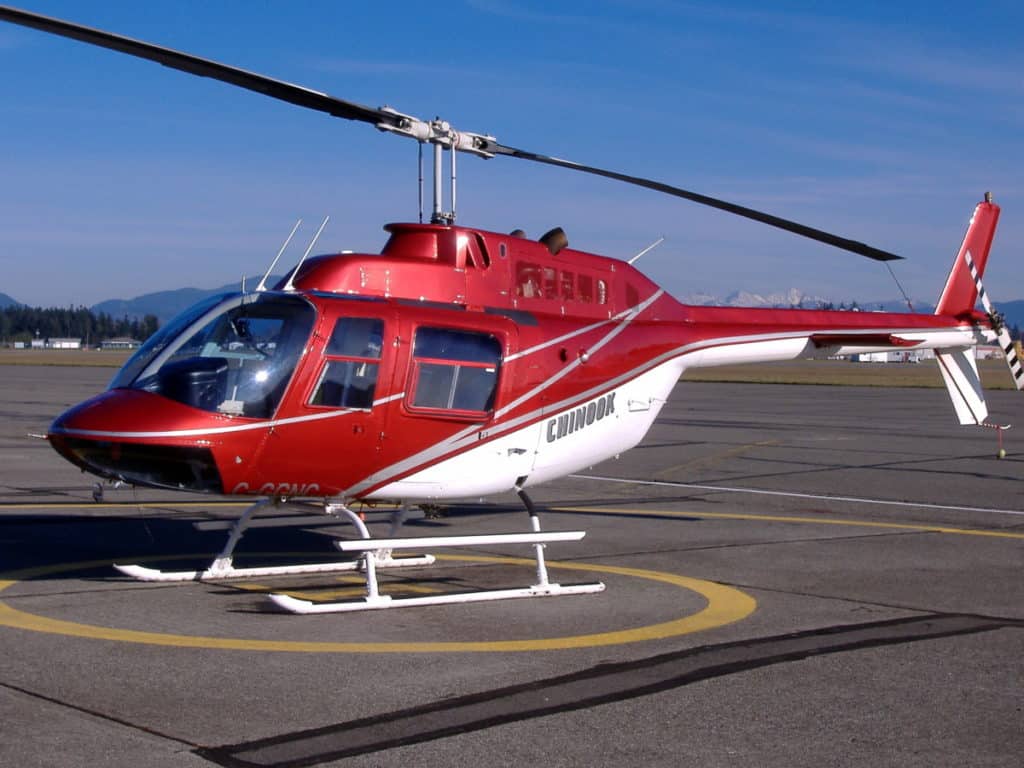
For most pilots, their authorized Category/Class is all they will ever need, but there are other aircraft, especially within the Airplane Category that requires additional training and an endorsement to be issued before you can fly them.
As a Private Pilot, you are not just limited to just one Category or even Class. If you wish, for example, to progress onto a Multi-Engine Class of aircraft you can get the training and pass the flight test then you will be issued a new license with both Single-Engine and Multi-Engine Classes listed.
Any Category or Class can be added or even initially trained on. A chat with your local flying instructor will give you all the options. If I listed them all here you would get a square butt from all the sitting!
What Endorsements Can a Private Pilot Get?
Staying safe is everyone’s priority and the FAA will place each aircraft into its own Category, Class, and can then further assign it a Type Certificate or an endorsement to fly it.
An aircraft that requires an Endorsement usually requires specific training to handle or operate those aircraft-specific systems or because they have unique flight characteristics that can bite the untrained. Tail-Wheel Aircraft are a great example of this.
Here are some of the Endorsements listed in §61.31 with what the FAA defines each Endorsement as:
High-Performance Airplane
A high-performance airplane is defined as an airplane with an
engine capable of developing more than 200 horsepower.
Complex Airplane
A Complex Airplane is an airplane that has a retractable landing
gear, flaps, and a controllable pitch propeller. In lieu of a
controllable pitch propeller, the aircraft could also have an
engine control system consisting of a digital computer and
associated accessories for controlling the engine and the
propeller.
Pressurized Aircraft
A Pressurized Aircraft is an aircraft that has a service ceiling or maximum operating altitude, whichever is lower, above 25,000 feet MSL (Mean Sea Level).
Tail-Wheel Airplane
A Tail-Wheel Airplane is an airplane with the two main landing wheels at the front of the aircraft and that aircraft is steered from the back wheel/Rudder.
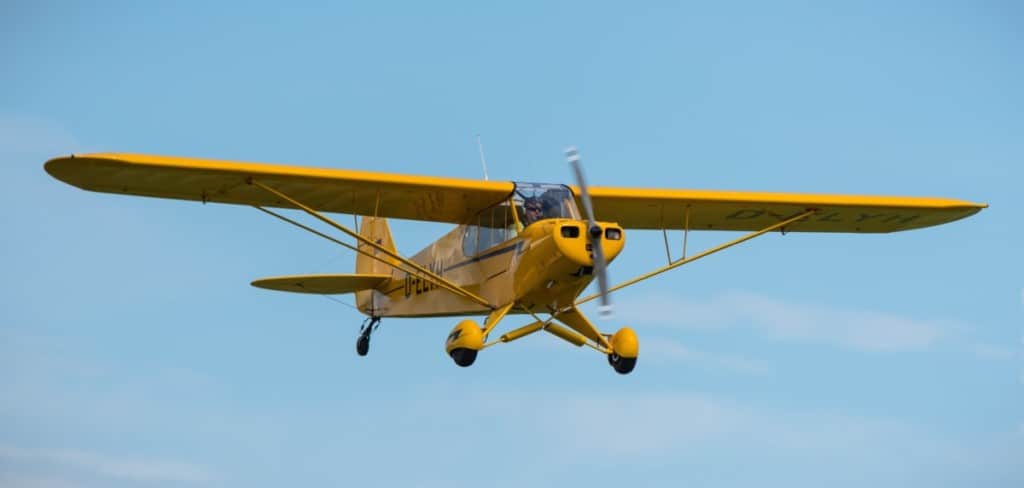
There are some fantastic additional ratings and endorsements you can get to add on to your Private Pilots License to give you the ultimate flexibility to fly almost any aircraft you wish or can afford.
Your instructor will be able to discuss with you all the options before you begin your training to get you learning on the right aircraft to help you reach your dream.
What’s Next?
If learning to fly is something you are really considering, then I highly recommend you check out the pilot training material from one of the best flight instructors in the country – Rod Machado.
He has a great selection of online training material and courses that will not only allow you to progress through your training at a faster, deeper rate, but the knowledge you will learn will also prepare you to become a safer, more knowledgeable pilot.
You can find the complete training collection Here at Rodmachado.com
To Finish
A Private Pilots License is one of the most flexible and freedom-generating privileges you can have in your life. Providing you do not try to make any money from flying people, you can go to places you never thought existed, experience so many great things, meet so many great people, and fly some incredible aircraft.
Providing you stick to the rules governed by your license you can have a lifetime of fun, excitement, and challenges.
Header Image:
Pilot Geoffrey Gallaway After Passing His PPL Checkride!: Flickr

